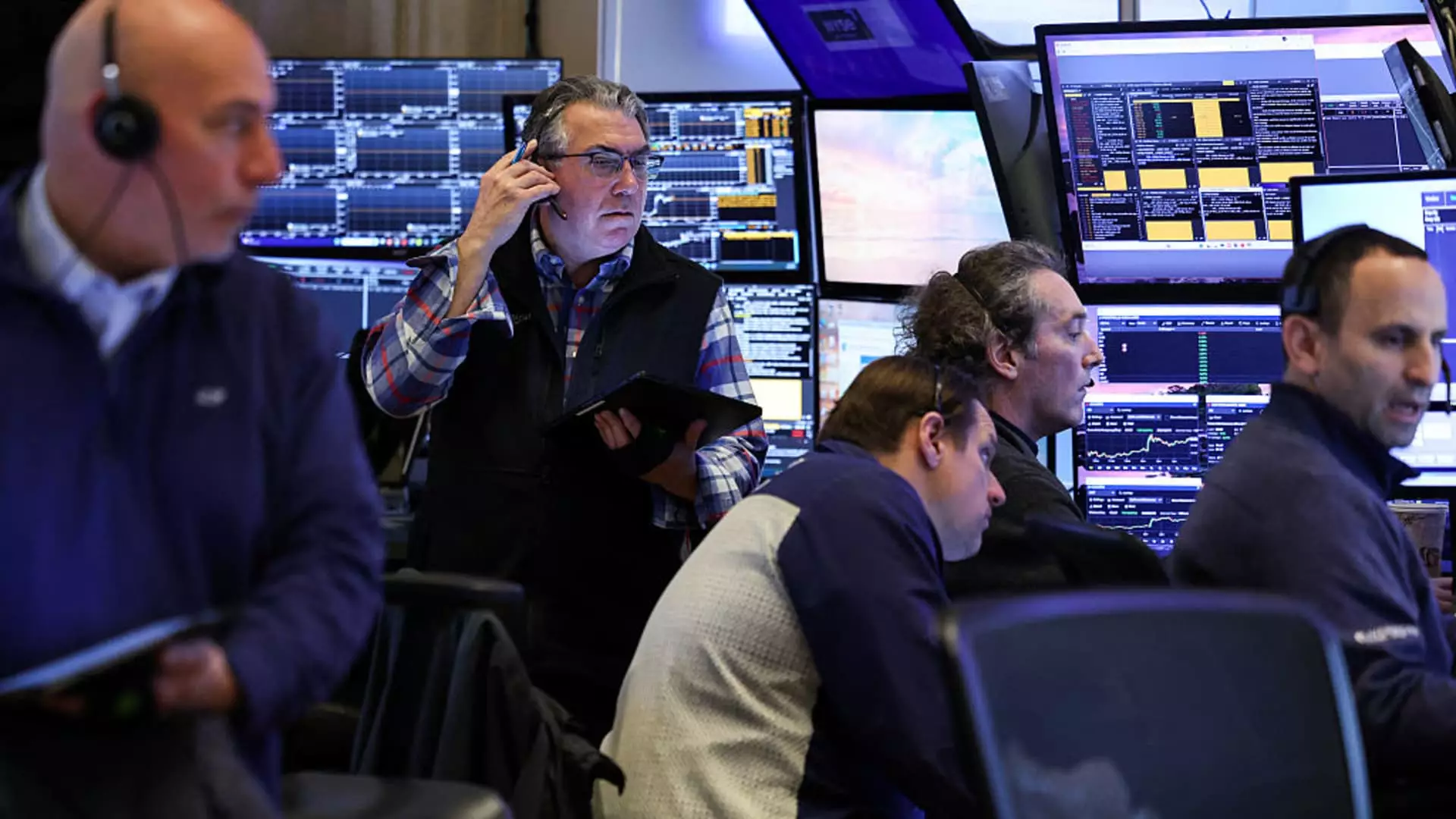The once-celebrated “Magnificent Seven” are now under scrutiny as their previous glory has faded. After a stellar two-year run in the stock market, these tech giants are facing a turbulent reality in 2025. Valued at levels reminiscent of pre-AI frenzy days, companies like Amazon, Nvidia, and Apple are presenting a paradox. While the market dynamics have shifted, the broader implications for investors are not as straightforward as they might appear. These companies—once synonymous with dizzying stock climbs thanks to the AI boom initiated by the likes of ChatGPT—have stumbled, leading many to wonder: are they truly worth the investment now?
The significant drop in price-to-earnings (P/E) ratios for these companies suggests that they might be undervalued. For instance, Amazon, once basking under a P/E ratio of 86, now hovers around 32. Nvidia, once the crown jewel of the AI stock surge, faced a fall from grace with its current P/E sitting at a mere 36, down from 56. The same narrative unfolds across many sectors in the tech industry. But the critical question investors must ask themselves is: Are these metrics genuine indicators of value, or are they merely reflective of a market correction?
Disparities in Market Performance
Despite the attractiveness of their lowered valuations, the stock market has not reacted uniformly. What was observed as a synchronized rise during the AI boom has evolved into a more fragmented performance post-DeepSeek unveiling. While some investors might see the opportunity in buying the dip, the disparate trajectories of the Magnificent Seven warrant a closer examination.
Some stocks are still held in high regard with elevated valuations, while others are deeply entrenched in bear markets. Tesla, for instance, is teetering on the edge with a shocking 119 P/E ratio—significantly higher than its pre-AI threshold of 70. The dual nature of this market—where some companies have experienced declines greater than 20%, while others defy typical market corrections—may lead to irrational exuberance; many might impulsively choose to invest based on past performance rather than current data.
Investors should tread carefully and analyze whether buying into the “V,” as many would advocate, could be detrimental in the long run.
The Macro-Economic Influences
As Bertie Wooster would say, “There’s always something.” The geopolitical landscape, especially concerning trade relations between the United States and China, poses a threat to Apple and its massive supply chain dependencies. With President Donald Trump signaling potential tariff escalations, Apple investors must brace for volatility. Furthermore, the specter of these economic shifts calls into question the company’s pricing strategies and long-term sales forecasts.
While some analysts remain optimistic about the tech giant’s ability to pivot and mitigate risks (like ramping up operations in India), the fact remains that external factors can heavily influence stock performance, often in unpredictable ways. Investors relying solely on the idea of “buy low” without factoring in macroeconomic headwinds may find themselves caught off guard.
Potential Opportunities: A Tactical Approach
Investment strategists like Mark Malek advise a more surgical approach in this environment—picking stocks on an individual basis rather than throwing money at the entire Magnificent Seven. This methodology highlights an essential truth about investing: a one-size-fits-all mentality can lead to missteps. As he mentions, excluding Apple and Tesla, the remaining five stocks may present interesting investment opportunities in the upcoming earnings season.
This tactic underscores a broader shift towards a more analytical perspective among investors. While there’s immense hype surrounding these tech behemoths, discerning the true value of individual companies amid today’s macroeconomic backdrop will be crucial for achieving lasting success.
Growth Beyond Market Noise
The long-term outlook still appears promising for many among the Magnificent Seven. These companies possess substantial cash reserves and competitive advantages that could enable them to navigate these choppy waters effectively. Their resilience has been tested by market dynamics, yet the foundational strengths could lead to rebounds in due course.
Despite the temptation to chase quick returns in these uncertain markets, it’s vital to remain grounded. Investors should harness their analytical skills, penetrating the noise for signals of real potential amid the clamor of fluctuating prices and mixed forecasts. The path forward requires a balance of optimism tempered by pragmatism, ensuring that capital allocation reflects informed decision-making rather than reactive impulse.
The fate of the Magnificent Seven in today’s stock market is far from decided. Even as interest rekindles, the market’s complexities entangle these investments in layers that must be unraveled strategically. Investors intending to stake their claims in this landscape must approach with discernment and a willingness to reassess the fundamentals continuously.

